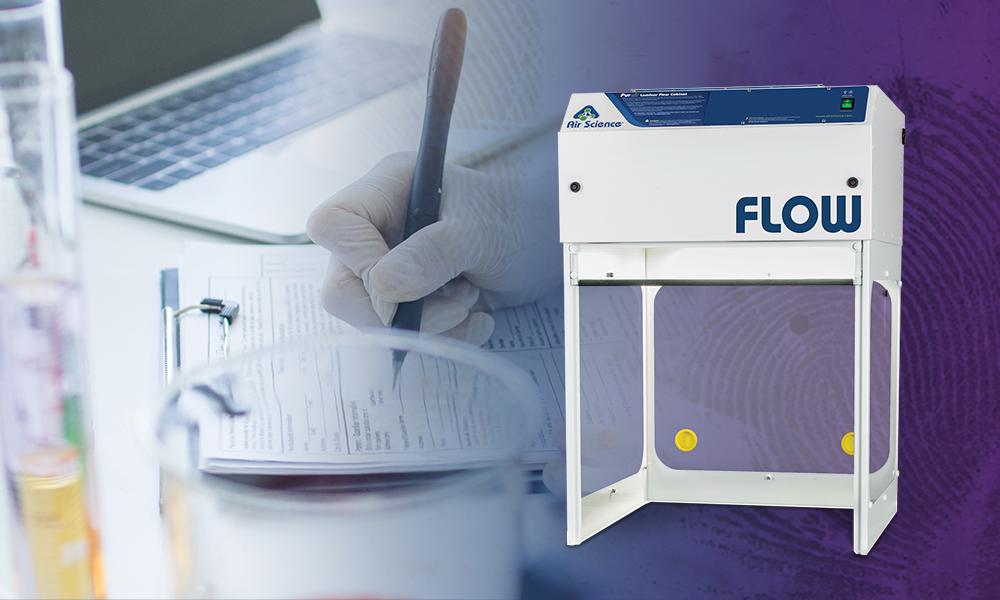
Forensic mycology brings numerous benefits to criminal investigations.
Mold growth on organic matter can help investigators determine postmortem intervals more accurately. Aspects of medical mycology, which studies fungal growths inside living humans, can also be used in criminal investigations to assist with the identification of psychoactive substances or even link suspects or evidence to certain locations via trace evidence of fungal spores.i However, cross-contamination of forensic mycology samples can lead to failure and make or break a case. One of the best ways to protect evidence and other samples from contamination is to use a Mycology Hood, which creates a sterile environment on the work surface.
Laminar Flow Hood or Biological Safety Cabinet for Mycology Applications
Purair FLOW Laminar Flow Hood
The Air Science® Purair FLOW vertical laminar flow hood helps prevent contamination during mycology applications by uniformly passing HEPA-filtered air through the cabinet interior. HEPA or ULPA filters remove up to 99.97% of particles 0.3 microns or larger or 99.999% of particles 0.12 microns or larger, respectively. This helps prevent unfiltered air from reaching and contaminating mycology studies on the work surface. The Air Science Mycology Hood also includes exclusive Multiplex™ Filtration Technology.
Purair BIO Biological Safety Cabinet
A biosafety cabinet is recommended for forensic mycology applications that may include toxins, potentially infectious diseases, or other substances that would necessitate biological protection for personnel and the environment. Class II, Type A2 biological safety cabinets (BSCs) protect against cross-contamination on the work surface but are also suitable for work with biosafety agents at levels 1, 2 and 3. The Purair BIO Class II, Type A2 biosafety cabinet is certified for safety and performance in accordance with NSF/ANSI Standard 49 and EN12469. It provides a safe laboratory workspace using optimum airflow design combined with an integrated HEPA filtration system. Room air is drawn in through the intake grille on the front of the unit, then under the work surface and directed to the top of the cabinet, where it passes through a HEPA filter. Negative pressure is created inside the cabinet resulting in a primary containment work area. At the same time, the HEPA filtration supplies clean air to the work surface in a vertical laminar flow pattern. These airflow patterns provide an optimum air curtain on the front opening, maintaining personnel and product protection. The exhaust HEPA filter traps biohazardous particles before the air is exhausted back into the laboratory, preserving environmental protection.
Learn more about Purair FLOW Mycology Hoods.
i Hawksworth DL, Wiltshire P. Forensic mycology: current perspectives. Research and Reports in Forensic Medical Science. 2015; 5:75-83. https://doi.org/10.2147/RRFMS.S83169